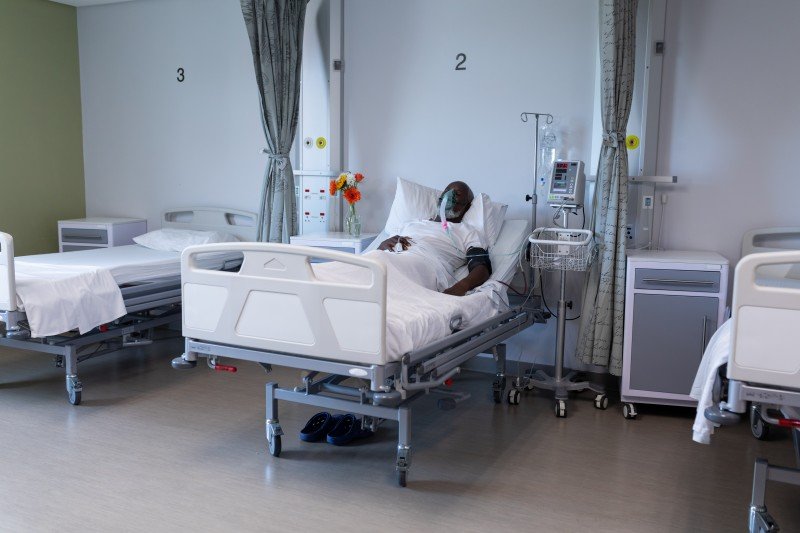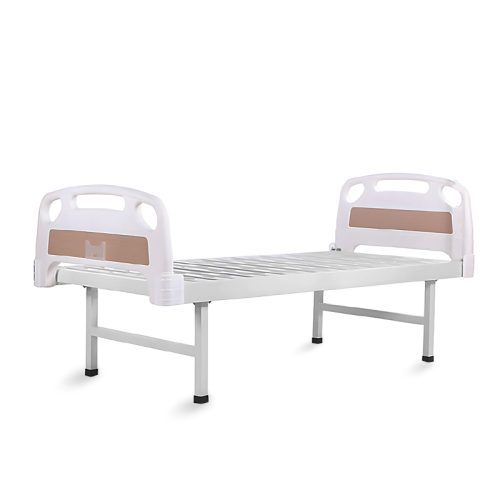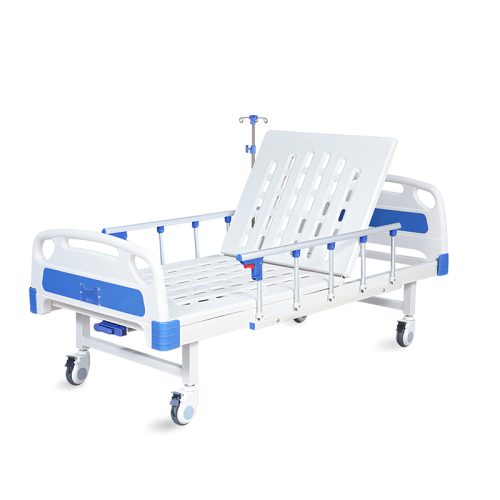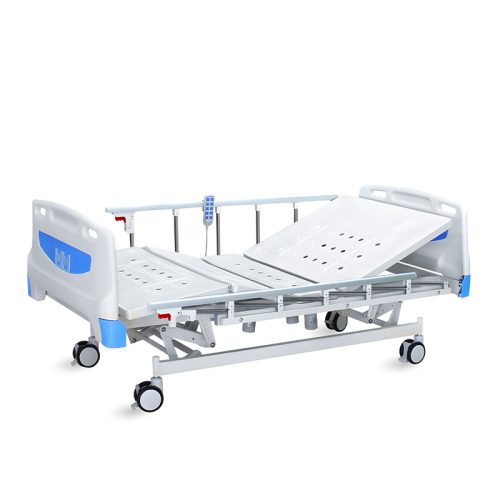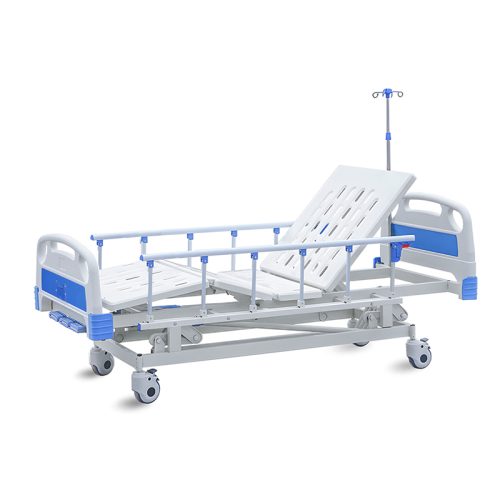
- Tempat Tidur Rumah Sakit
Cara Memilih Tempat Tidur Rumah Sakit Terbaik untuk Perawatan Lansia di Rumah
- Oleh kelingmedical
Why a Hospital Bed is Essential for Elderly Care
Ensuring our aging loved ones receive optimal care becomes our highest priority as they grow older. Selecting an appropriate hospital bed remains a crucial consideration for elderly home care. Elderly individuals with mobility issues and chronic health conditions experience enhanced comfort, safety and quality of life through the use of hospital beds. This guide provides a complete walkthrough to help you select the best hospital bed for elderly care at home.
Peningkatan Kenyamanan Aging individuals frequently develop medical conditions like arthritis and osteoporosis or suffer chronic pain that makes resting in standard beds uncomfortable or painful. The adjustable positions of hospital beds designed for elderly care enable users to elevate their head or legs and even their entire body for optimal comfort. This feature helps to eliminate discomfort from pressure points while diminishing pain levels and enhances the quality of sleep.
Enhanced Safety Hospital beds serve as a protective measure against falls which rank as the top reason for injuries in senior citizens. Side rails act as barriers which stop users from rolling out of bed by accident. Hospital beds often feature locking wheels which help keep the bed firmly positioned when required. Adjustable bed height assists elderly people with limited mobility to enter and exit bed safely.
Easier Caregiving Providing care for an elderly family member requires physical effort because they may need help with their basic daily tasks like bathing, dressing, and eating. The ability to adjust hospital bed height enables caregivers to position the bed at an optimal working level which helps minimize physical strain on the back and joints. Remote controls in some models allow caregivers to adjust the bed without physically moving or lifting patients.
Types of Hospital Beds for Elderly Care
Understanding the various types of hospital beds available is essential when selecting one for elderly care. The different types of hospital beds provide distinct features which meet particular user requirements.
Tempat Tidur Rumah Sakit Listrik Electric hospital beds operate on electricity and include a remote control for effortless position adjustments. Elderly individuals who require regular position changes due to arthritis or respiratory and circulatory conditions benefit from this type of bed. Users can easily change bed height as well as head and foot positions by pressing a button to find their preferred sleeping or sitting position.
Electric hospital beds stand out due to their convenient operation. Elderly individuals can operate their beds independently with the remote control which proves particularly useful for those who cannot move around easily. Many electric hospital beds feature memory settings that enable users to store preferred positions which can be returned to at the touch of a button.
Tempat Tidur Rumah Sakit Manual Hospital beds that operate manually require adjustment through a crank or lever. Though manual hospital beds need more effort to operate compared to electric models they remain affordable and fit elderly users who don’t need constant readjustments. Individuals who need hospital beds for temporary use or those operating on limited finances should consider manual hospital beds.
Manual hospital beds provide similar features to electric models such as adjustable head and foot positions along with height adjustments but at a lower cost. Elderly people who need regular position adjustments due to severe mobility problems may find manual hospital beds unsuitable for their needs.
Tempat Tidur Rumah Sakit Bariatrik The bariatric hospital beds that support heavier individuals possess a reinforced structure and enhanced weight capacity. These beds deliver enhanced support and comfort to elderly patients who require them. Bariatric beds offer wider dimensions than standard hospital beds which helps patients move freely while minimizing pressure sore risks.
Bariatric hospital beds typically feature reinforced structures along with specialized mattresses that help deliver extra support and pressure relief. Specialized mattresses have been engineered to spread out weight distribution which helps prevent bedsores while enhancing user comfort.
Consider essential hospital bed features when selecting one for elderly care.
Selecting the correct hospital bed requires evaluating multiple essential features that improve comfort while ensuring safety and functionality.
Adjustable Positions Select a bed that offers customizable adjustments for head position, foot position, and overall bed height. The adjustable bed positions feature meets the needs of elderly people who require leg elevation or the ability to sit up in bed for comfort during sleep. Adjustable positions provide relief for acid reflux sufferers and improve conditions for sleep apnea and circulation issues.
Rel Samping Side rails provide essential safety protection by preventing falls. Select beds with customizable support options by choosing models that offer adjustable or removable side rails. Certain bed models include padded rails to enhance comfort while alternative designs offer split-rails that make getting in and out of bed more convenient.
Kompatibilitas Kasur Comfort and pressure relief require a high-quality mattress. Search for bed mattresses that possess waterproof properties and hypoallergenic materials while offering bedsore prevention design. Elderly people who experience chronic pain or mobility problems gain extra support and comfort from mattresses made of memory foam or gel-infused materials.
Remote Control The use of a remote control enables elderly people or their caregivers to change the position of an electric bed effortlessly. Advanced features like massage settings and USB ports for charging devices come with some electric bed models.
Kapasitas Berat The bed must be able to safely hold the patient’s body weight. Bariatric beds have special features for heavier patients and typically support 500 pounds or more.
Selecting the most suitable hospital bed for elderly care involves evaluating the patient’s requirements as well as the available space and financial resources.
When choosing an appropriate hospital bed for elderly care it is important to assess both the patient’s specific needs and the constraints of the available room space as well as financial limits.
Assess the Patient’s Needs Take into account mobility, weight factors and medical conditions which might necessitate specific bed features. An elderly patient who suffers from severe arthritis should use an electric hospital bed with remote control capabilities while a person with limited mobility requires a bed that has side rails and low height for better access.
Measure the Room Hospital beds require more space than traditional beds since they need room for both the bed itself and any supplementary equipment. When choosing a bed, obtain room dimensions and account for doorways, hallways, and furniture arrangement.
Set a Budget Since hospital bed prices range significantly from one model to another make sure you know your budget constraints before you choose one. Higher-quality beds represent a better value over time and are especially beneficial to people with long-term health conditions.
Consult with a Healthcare Professional A healthcare professional offers important advice and suggestions which are tailored to the individual needs of the patient. Healthcare professionals will assist you in understanding your insurance options and rental possibilities for hospital beds.
Tips for Maintaining a Hospital Bed
Hospital bed maintenance is crucial for keeping it functional over time.
Regular Cleaning Frequently cleaning both the hospital bed frame and mattress prevents dirt accumulation and bacterial growth. Use warm water mixed with a gentle detergent to clean the bed surfaces while steering clear of strong chemicals that might harm the materials.
Check for Wear and Tear Conduct regular inspections of the bed to identify any damage indicators including loose screws and worn components and frayed electrical cords. Act immediately when problems arise to avoid additional damage to the bed and potential safety risks.
Follow Manufacturer Instructions To maintain your warranty’s validity you must adhere to the manufacturer’s maintenance and usage instructions. Users should adhere to the manufacturer’s weight restrictions and assembly instructions along with their specified cleaning procedures.
Kesimpulan
Selecting the right hospital bed for home elderly care stands as a vital choice that greatly affects the comfort and safety while enhancing the quality of life for your family members. When you learn about hospital bed types along with essential features and maintenance tips you can choose the best bed that fulfills your requirements. Selecting an electric, manual or bariatric hospital bed will give you peace of mind and enhance your loved one’s general well-being.
PERTANYAAN YANG SERING DIAJUKAN
Q: For elderly care at home which hospital bed type serves patients best? A: The optimal hospital bed type should align with the patient’s specific requirements. Electric hospital beds offer convenience but manual hospital beds provide better affordability.
Q: Is a standard bed suitable for elderly home care? A: A hospital bed contains essential features such as adjustable positions and side rails which make it suitable for elderly care unlike regular beds.
Q: What is the price range for purchasing a hospital bed specifically designed for elderly care? A: The price of the bed changes based on its type and various features. Patients will find electric hospital beds to cost more than their manual counterparts.
📧 Email: inquiry@shkeling.com
🌐 Situs web: www.shkeling.com.cn
Kami berharap dapat membangun kemitraan yang sukses dengan Anda!

